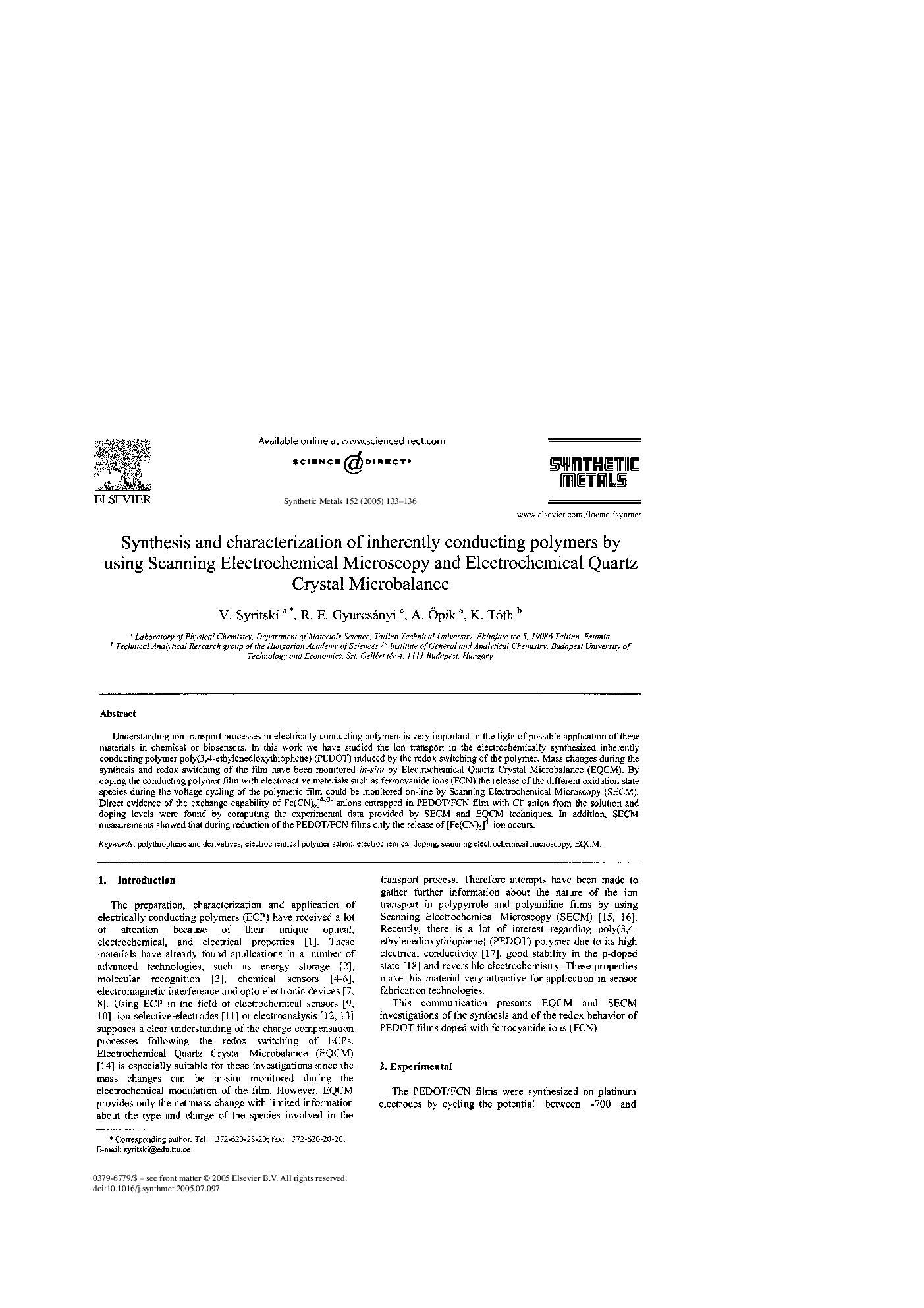| Article ID | Journal | Published Year | Pages | File Type |
|---|---|---|---|---|
| 9776420 | Synthetic Metals | 2005 | 4 Pages |
Abstract
Understanding ion transport processes in electrically conducting polymers is very important in the light of possible application of these materials in chemical or biosensors. In this work we have studied the ion transport in the electrochemically synthesized inherently conducting polymer poly(3,4-ethylenedioxythiophene) (PEDOT) induced by the redox switching of the polymer. Mass changes during the synthesis and redox switching of the film have been monitored in-situ by Electrochemical Quartz Crystal Microbalance (EQCM). By doping the conducting polymer film with electroactive materials such as ferrocyanide ions (FCN) the release of the different oxidation state species during the voltage cycling of the polymeric film could be monitored on-line by Scanning Electrochemical Microscopy (SECM). Direct evidence of the exchange capability of Fe(CN)6]4â/3â anions entrapped in PEDOT/FCN film with Clâ anion from the solution and doping levels were found by computing the experimental data provided by SECM and EQCM techniques. In addition, SECM measurements showed that during reduction of the PEDOT/FCN films only the release of [Fe(CN)6]4â ion occurs.
Keywords
Related Topics
Physical Sciences and Engineering
Materials Science
Biomaterials
Authors
V. Syritski, R.E. Gyurcsányi, A. Ãpik, K. Tóth,
